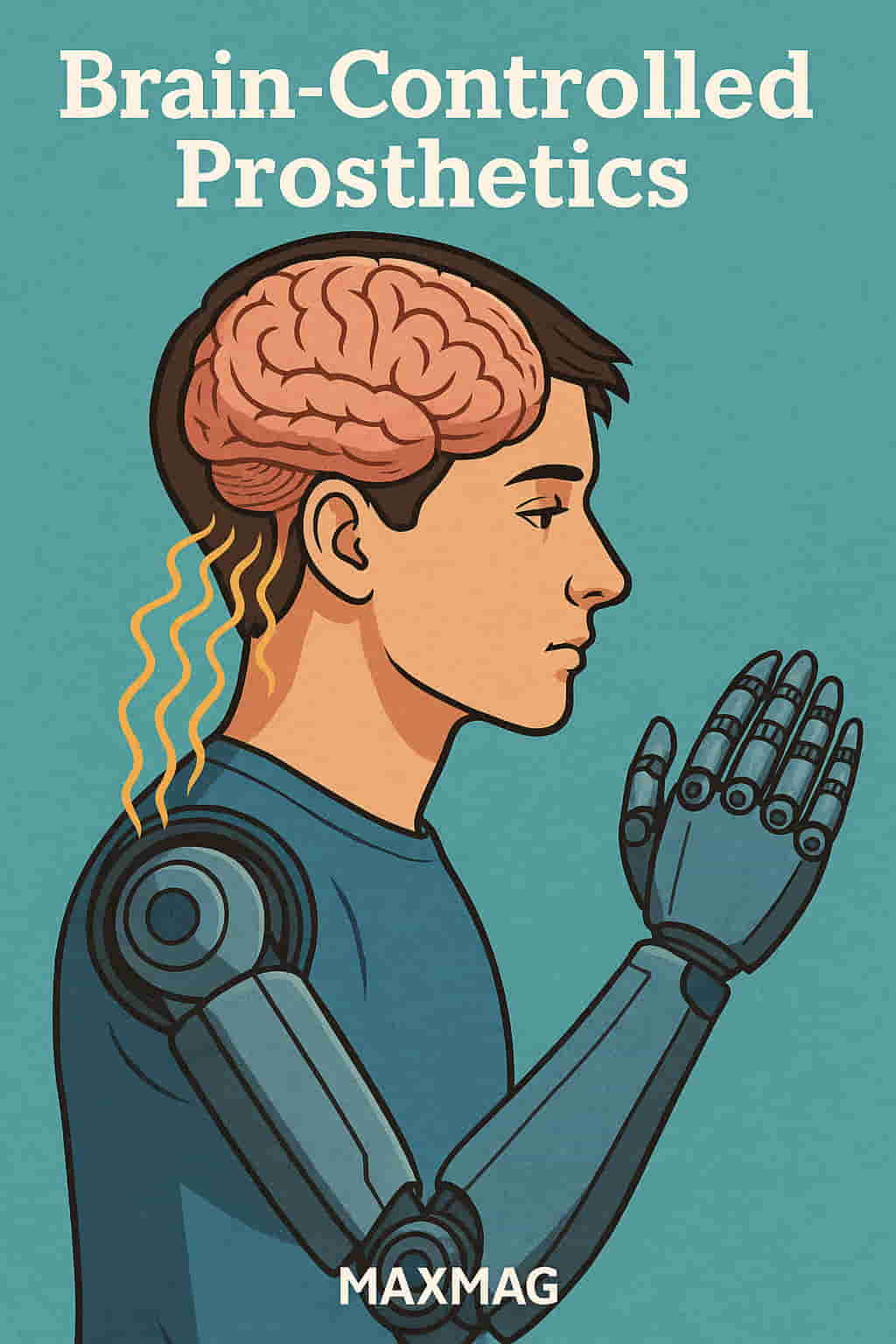
In recent years, medical science and engineering have taken a leap into the future with the development of the brain-controlled prosthetic arm. This groundbreaking technology allows individuals with limb loss to operate a robotic arm using nothing but their thoughts. While it may sound like science fiction, this innovation is already transforming rehabilitation centers, research labs, and the lives of amputees across the globe.
The brain-controlled prosthetic arm is not just a technological marvel—it represents a deep integration between biology and machinery, showing us what’s possible when artificial intelligence meets neuroscience.
How the Brain Communicates with a Prosthetic Arm
At the heart of this innovation lies a complex system that deciphers neural signals and translates them into movement. When a person thinks about moving their arm, the brain generates electrical impulses. These signals are picked up through various interfaces—either non-invasive devices like EEG headsets or implanted electrodes that connect directly with nerve endings.
Get the best of tech, movies, and culture from MaxMag — weekly.
SubscribeThese neural impulses are then interpreted by machine learning algorithms, which instruct the prosthetic to move in a specific way. Companies like Neurable and research teams at institutions such as Johns Hopkins Applied Physics Lab are paving the way for more accurate and responsive prosthetics by combining neuroscience, robotics, and AI.
The Rise of Smart Prosthetics
Traditional prosthetic limbs often rely on mechanical controls or residual muscle movement. While useful, they lack the natural feel and control of a real arm. In contrast, a brain-controlled prosthetic arm can allow for multi-joint movement, gripping, and even fine-motor skills like writing or picking up small objects.
What sets it apart is its ability to respond in real time. Some systems, such as those under development at DARPA’s BRAIN Initiative, are capable of mimicking natural motion with nearly human-like fluidity. With embedded sensory feedback, users can even “feel” the object they are holding—a major breakthrough in prosthetic technology.
Everyday Life with a Brain-Controlled Prosthetic Arm
For someone who has lost a limb, adapting to life with a brain-controlled prosthetic arm offers not just physical support, but emotional healing as well. The intuitive nature of these prosthetics allows users to regain autonomy in daily tasks—eating, typing, carrying groceries, or simply holding a loved one’s hand.
Real-life case studies, such as the ones conducted by The Cleveland FES Center, have shown that users develop control over their prosthetics in just weeks, with continued improvements over time. The process is guided by regular therapy sessions, recalibration of the neural interface, and sometimes even virtual reality-based training programs.
H2: Brain-Controlled Prosthetic Arm – Engineering Meets Empathy
While the technology is impressive, what makes the brain-controlled prosthetic arm truly remarkable is its human impact. This device represents the merging of empathy and engineering. It allows researchers and developers to not only build advanced tools but to improve the quality of life for millions around the world.
Collaborations between universities and companies are crucial here. For instance, Stanford’s Neural Prosthetics Translational Lab has helped many paralyzed individuals regain partial upper-limb function through the use of implanted electrodes and robotic arms, opening up new possibilities for independence.
Sensory Feedback: The New Frontier
A growing area of focus in prosthetics is sensory feedback. This means that users can actually feel textures, pressure, or temperature through their prosthetic hand. Tiny sensors placed in the fingertips of the artificial limb transmit information to the nervous system, creating a sensation that the brain interprets as touch.
This feature is currently being tested by leading institutions like Caltech’s Center for Autonomous Systems, where researchers are developing hands that offer the brain a sense of proprioception—an awareness of where your limbs are in space. This allows for more natural movement and significantly improves balance and coordination.
Limitations and Ongoing Challenges
Despite major strides, the brain-controlled prosthetic arm still faces challenges. Cost remains a barrier, as many systems exceed $100,000. Most are still in research or pilot phases and not widely available for public use. There are also medical risks for users who opt for invasive neural implants.
Furthermore, training the AI to respond accurately to a user’s intentions takes time. No two brains are alike, and creating a universal decoder that works for everyone remains a hurdle. Privacy is another concern; some fear the possibility of their neural data being misused or breached.
To address these issues, initiatives like OpenBCI are developing open-source platforms that allow users to take greater control over their neural interfaces, making the tech more affordable and accessible.
The Future of Prosthetic Intelligence
As AI continues to evolve, so will the precision and adaptability of the brain-controlled prosthetic arm. Future models may integrate with augmented reality to assist with training or include emotional sensors that allow the prosthetic to respond to stress or excitement.
Some researchers are exploring ways to make these limbs self-learning—capable of improving based on the user’s movement patterns and correcting errors in real time. Imagine a prosthetic that knows when you’re tired, and adjusts its grip or speed accordingly.
Companies like BrainCo are already developing next-gen devices that combine muscle sensors, AI prediction, and brainwave monitoring into a single system, promising faster and more fluid motion than ever before.
Frequently Asked Questions
1. How does the brain actually control a prosthetic arm?
A brain-controlled prosthetic arm captures neural signals using sensors or implants. These signals are then decoded by AI and translated into commands for movement.
2. Are these devices available for purchase?
While some non-invasive models are commercially available, most high-precision brain-controlled prosthetics are still in the clinical trial or development stage.
3. Can I feel objects with the prosthetic arm?
Yes, certain models provide sensory feedback through implanted nerve interfaces or surface-level sensors, enabling users to experience touch.
4. Is surgery required to use one?
Not always. Non-invasive systems use EEG caps or external sensors, while more advanced setups may involve minor surgical procedures for electrode implants.
5. Are there affordable options?
Open-source initiatives and emerging low-cost prototypes are reducing prices. Organizations like OpenBCI are making this tech more accessible to broader communities.




